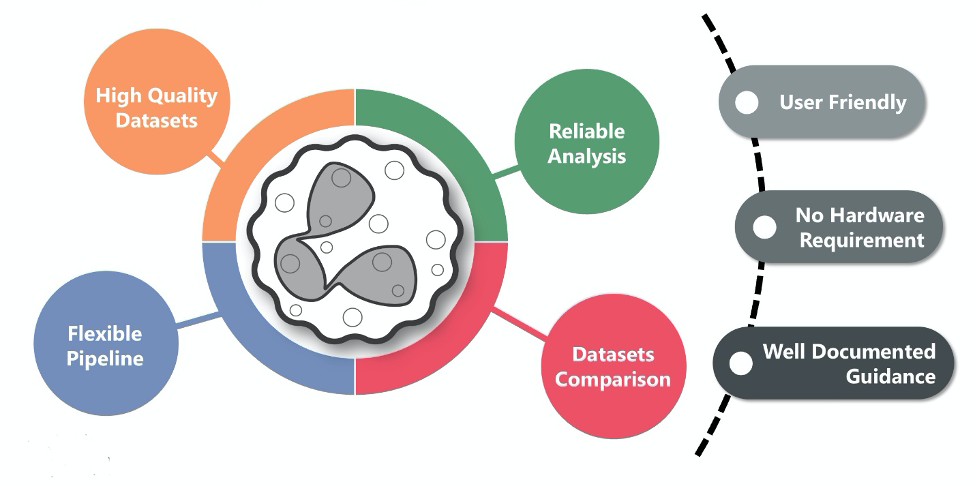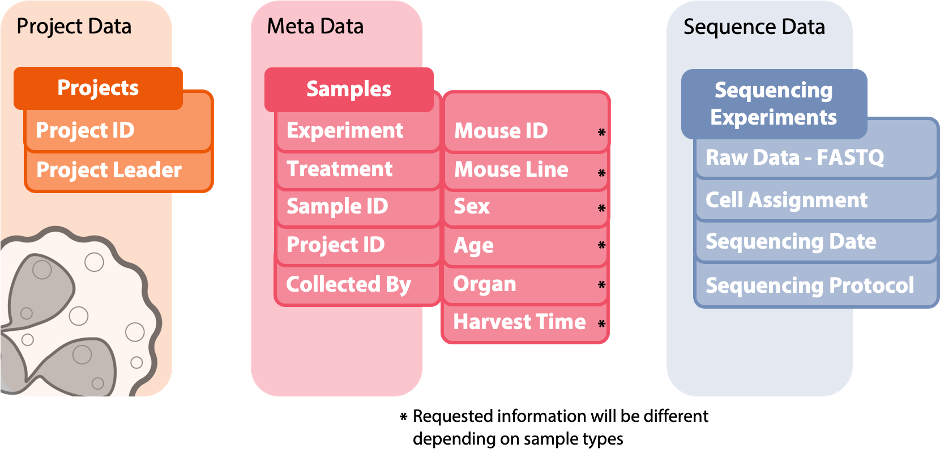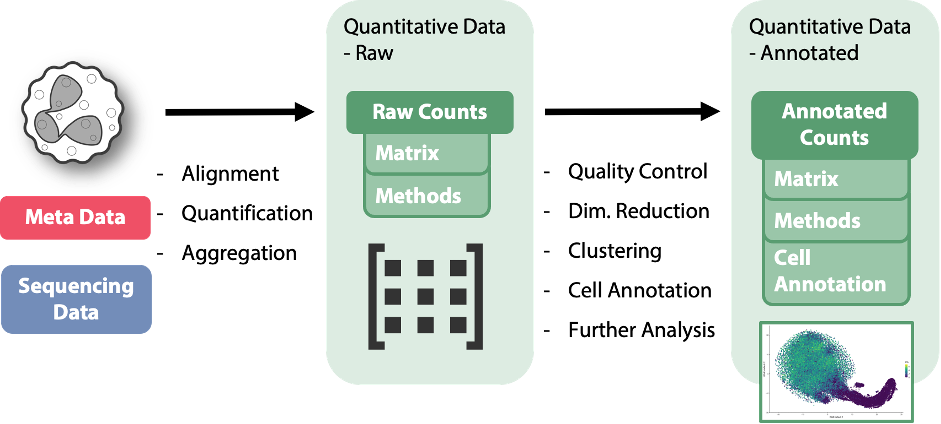
Within the INF project we will build the Atlas of Neutrophil Biology, an integration of transcriptomic, and proteomic datasets generated within the consortium as well as of data sets publicly available. Datasets will be comprehensively organized, curated, and annotated, to accurately outline relevant information such as organism, sex, age, organ, experimental conditions, date of creation or publication. Dimensionality reduction, clustering analysis, cell type annotation and differential expression analysis will be performed in standardized manner, and the resulting information will be added for data fetching and visualization. Data sets and analyses will be housed in a web-based platform with a user-friendly interface for public access coined the Atlas of Neutrophil Biology.
Guidelines for data and metadata upload
Raw data will be required in the form of fastq files. An important aspect to ensure high quality is the availability of all metadata. This includes project ID, project leader and experimenter name, species, sex, age, organ, treatment, genotype, number of specimens, time of the day for sampling, method of processing (enzymatic digestion, density gradients, etc.), the timing for library preparation, method of cell hashing if used, list of antibodies for CITE-seq if used, etc. A link for data upload will be available shortly.

Overview of basic functions
Datasets will be aligned, quantified (generate counts), aggregated, and filtered to generate raw count matrices. After quality control measures and batch correction (if needed), data will be normalized, dimensionality reduction (PCA, UMAP, tSNE), identification of high variable genes, and clustering (Louvain clustering) will be performed. An important aspect remains as an important caveat when annotating neutrophil subpopulation at the RNA level. It is the goal of this atlas to combine the information obtained from the CRC to define key markers to identify neutrophil progenitors, immature and mature neutrophils, neutrophils from certain organs or subpopulations arising from inflammatory conditions.

